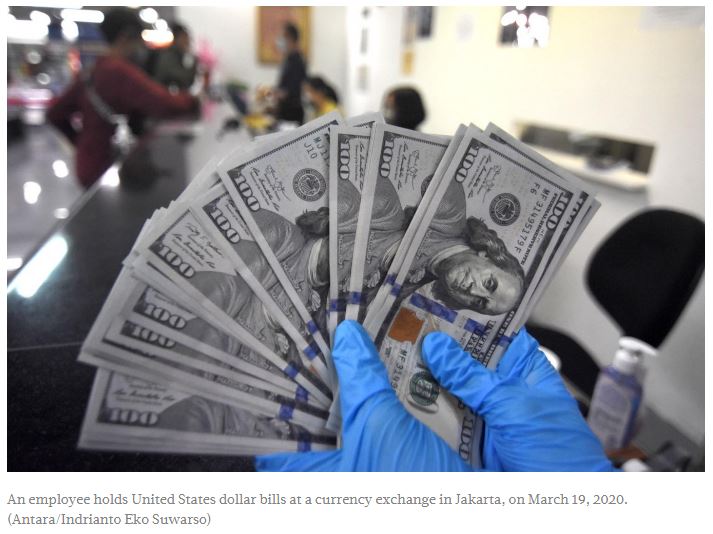Indonesia’s foreign debt rises to $413b in October
Indonesia’s foreign debt rose to US$413.4 billion in October driven by higher borrowings by the private sector and the government, Bank Indonesia (BI) announced Tuesday.
Indonesia’s external debt, which includes government and private-sector borrowings, increased 3.3 percent year-on-year (yoy) in October, lower than 3.8 percent yoy growth recorded a month prior, as the government paid its debts amid capital inflows to the bond market following the easing uncertainty in the global financial market.
According to BI, the government’s foreign debt increased 0.3 percent yoy to $199.8 billion in October, slower than 1.6 percent annual growth in September. Meanwhile, overall public debt, which includes borrowing by the central bank, amounted to $202.6 billion.
Private sector foreign debt, which includes borrowings by state-owned enterprises, grew 6.4 percent to $210.8 billion in October. The data reveals that 77.4 percent of the debt came from four sectors, namely mining, manufacturing, financial services and insurance, as well as electricity and natural gas procurement.
“The government’s foreign debt is being managed in a prudent and accountable manner to support priority spending to handle the COVID-19 pandemic and support national economic recovery,” the central bank said in a statement.
The government has earmarked Rp 695.2 trillion ($49.3 billion) of stimulus to finance its healthcare response and economic recovery program, as economic activity has been paralyzed by the coronavirus pandemic. The stimulus allocation is expected to widen the state budget deficit to 6.34 percent of gross domestic product (GDP) this year, prompting higher government borrowing as tax collection dries up.
The government has issued Rp 943.8 trillion worth of sovereign debt papers this year, up 143.8 percent yoy as the government planned to borrow Rp 1.17 quadrillion to cover the fiscal deficit. The debt to GDP ratio is expected to reach 37 percent this year from around 30 percent last year.
Further, the data show the government’s foreign debt is being used to fund social aid and healthcare services, infrastructure, education, government administration, defense and social security, as well as finance and insurance (11.4 percent).
The central bank deemed that total external debt in October was still at a healthy level with a debt-to-GDP ratio of 38.8 percent, slightly up from the 38.1 percent ratio recorded in September.
“The role of external debt will be optimized to support development financing and stimulate economic recovery by minimizing risks that may affect macroeconomic stability,” BI stated, adding that long-term loans accounted for almost 90 percent of the current outstanding debt.
Credit rating agency Moody’s Investor Service expected the government’s debt to reach 40 percent of GDP by the end of next year due to a wider fiscal deficit.
“If the debt does not fully stabilize by next year, it will still fall within the median for Baa rated sovereign [debts],” Moody’s Investor Service senior analyst Anushka Shah said during a virtual press briefing on Tuesday.
“The deterioration that we are seeing this year in fiscal and debt metrics leave Indonesia in line with the median averages because of its strong starting points.”
However, Indonesia’s debt affordability, which is the ratio of interest payments to revenue, had deteriorated significantly, Shah went on to say, adding that this would limit the government in undertaking a wider fiscal stimulus.
Source: https://www.thejakartapost.com/news/2020/12/15/indonesias-foreign-debt-rises-to-413b-in-october.html


 English
English




